How to Evaluate the Quality of Precision Tooling
-
Assessing tooling quality requires examining the entire assembly—tool holders, collets, nuts and retention knobs—along with spindle tolerance for optimal precision.
-
Poor tooling leads to inconsistent performance, increased costs and reduced precision. Even minor improvements in runout can significantly lower the cost per hole, proving that high-quality tooling pays off in the long run.
-
The quality of tooling depends entirely on precise manufacturing and rigorous quality control. At BIG DAISHOWA, we oversee every step—from heat treating to grinding—ensuring complete control over every component for superior performance and reliability.
We’ve all heard about the importance of quality tooling when it comes to accuracy, tool life and, ultimately, the bottom line. But what are the best ways to evaluate tooling for quality? We sat down with Michael Herman, Vice President Sales at BIG DAISHOWA, who shared some insider secrets to help you separate the best from the rest.
Q: Before we get into how to evaluate tooling quality—what problems can arise from low quality tooling?
A: The use of low-quality tooling can lead to a cascade of issues that impact both the efficiency of machining operations and the quality of the final product. Low-quality tooling often results in inconsistent performance, making it difficult to maintain tight tolerances and high levels of precision across production runs. Common problems include the oversized holes, poor cutting conditions, and increased cost per hole.
These issues not only affect the immediate output but can also lead to increased operating costs, as low-quality tools tend to wear out faster and less predictably. As an example, low quality tooling can increase Total Indicator Runout (TIR). Even small improvements in TIR can yield substantial benefits—for instance, decreasing runout by approximately one one-thousandth of an inch can improve cost per hole by about 10 percent.
Ultimately, while low-quality tooling may seem cost-effective initially, it often leads to higher costs and quality issues in the long run.
Q: What are the most important aspects to evaluate when assessing precision tooling?
A: When assessing precision tooling, several key factors come into play. It's crucial to have a thorough understanding of the print and the tolerances you're aiming to achieve. Meaning, before assessing the quality of the tooling itself, it’s vital to first understand which type of tooling setup is right for the job. Once you have a handle on the application, the real essence of precision lies across the full spectrum of tooling components. In this regard, no one thing makes the difference; rather, it’s an aggregate of a variety of elements—from the retention knob to the AT tolerance of the tool holder to the additional components of the tool assembly like the collet and nut. Using these parameters, you can begin to compare the quality of different brands at a deeper level.
Q: What is AT tolerance, and why is it important when evaluating tool holders?
A: AT tolerance refers to tolerance of the machine tool spindle as dictated by the machine manufacturer. The scale starts at AT0—a lock fit tolerance that makes the tool very difficult to release. Machine manufacturers typically grind spindles to an AT1 tolerance; at BIG DAISHOWA we find that grinding tool holders to an AT2 tolerance is the ideal complement to standard machine tool spindle AT tolerances.
Many competitors, on the other hand, grind to an AT3, which doesn’t provide the ideal surface contact for rigid, high-precision machining. Keep in mind, going from an AT2 to an AT3 can cut the level of precision in half. Our tighter AT2 tolerance provides more surface contact and better run-out reliability within the machine spindle.
The V-flange is key here. We meticulously grind every diameter of the V-flange, which not only helps with rigidity during machining, but can also result in more accurate and repeatable tool changes.
Q: You mentioned that components like collets, nuts and retention knobs are important. How should shops be evaluating them for quality?
A: First, you’ll want to choose the right components for the application. For example, a standard ER collet might do the trick for one application, while something like end milling might call for a specialized option like the Mega E collet—which will give more surface contact. As another example, some nuts will work better for different applications. Basic friction nuts may work for many applications, but there are also advanced options like bearing nuts, which force the tool down in one motion as they rotate, effectively eliminating TIR problems.
Once you’ve selected the right components for the application, it comes down to assessing quality and there are several insider tips here:
- Even the smallest burr can inhibit precision. Run your fingers along the slots of the collet—it should be smooth and burr-free.
- Similarly, the thread quality of the tool holder and nut is crucial. Feel the threads to ensure they have been ground to a smooth finish.
- The taper is vital too—if you can run your fingernail along the taper and feel texture, you’ll have problems achieving maximum precision.
Q: What about tooling material—how does this affect precision?
A: Some tooling manufacturers may put money into some tooling elements, but use subpar materials for components like the collet, nut and retention knob. This can cause premature tool wear and hidden cost. Furthermore, it matters how the materials are then ground and heat-treated to create the final product. Not all tooling manufacturers are created equal here.
Q: How do tooling manufacturing and quality control processes come into play when evaluating your options?
A: The quality of all tooling is based on the manufacturing and quality control processes, so this is definitely something to look at when assessing tooling partners. Any tooling manufacturer can make claims—but are they thoroughly inspecting their products to ensure they’re up to snuff? This is a major focus at BIG DAISHOWA—and we spare no expense when it comes to manufacturing and quality control.
Q: How does BIG DAISHOWA ensure a higher quality product for greater precision?
A: As mentioned, it all starts with the manufacturing and quality control processes. In this regard, BIG DAISHOWA ensures the highest quality in several ways:
- We take great care in grinding all of our components to exacting tolerances and finishes. You can run your finger over any BIG DAISHOWA tooling component and feel a smooth, burr-free finish.
- We have a rigorous quality control process. For example, each collet is precision ground and hand-measured twice—once at the nose (measured to 40 millionths) and again at four times the diameter (measured to about 20 millionths). This level of precision ensures exceptional accuracy.
- We use high-quality tool steel (H13) not just on tool holders, but on collets, nuts and retention knobs as well.
- Each retention knob features a unique serial number that includes a "born-on" date. This feature allows users to estimate the number of cycles the knob has undergone, which is vital for maintenance purposes.
- While some competitors contract out elements of their tool manufacturing process, we do everything in house—from heat treating to grinding—for complete process control over every component that goes into our product.
To learn more about which tooling is right for your precision machining needs, talk to a BIG DAISHOWA expert today.
Did you find this interesting or helpful? Let us know what you think by adding your comments or questions below.










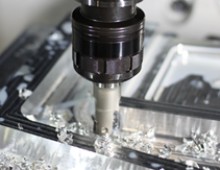
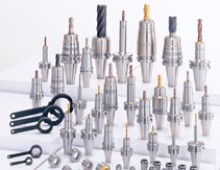

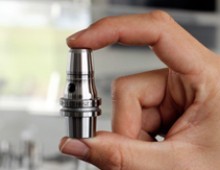
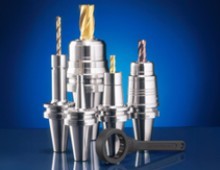
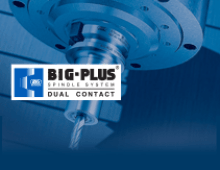
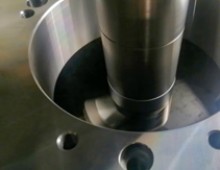
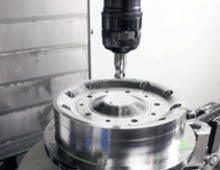
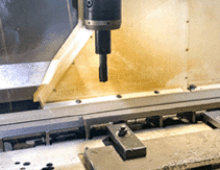
Add new comment